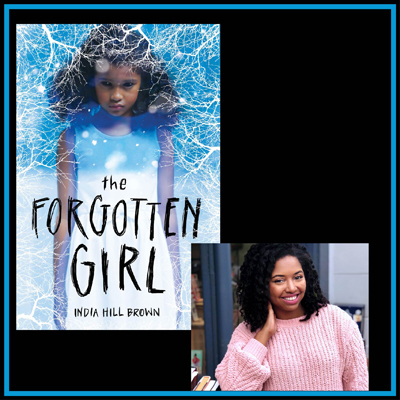The Power of Story—Scary Stories for the Rest of Us
One of the reasons I wrote The Forgotten Girl was so that little girls who look like Avery and Iris and little boys who look like Daniel can see themselves on the page, and not have to spend their lives proving they are worthy of recognition from people who should realize their greatness anyway.

Countless times growing up in my home state of South Carolina, my family and I would visit the cemetery where my late Uncle and Great Aunt are buried. My Grandmother would explain to us that the cemetery used to be segregated: Black people were buried on one side of the road, and White people were buried on the other.
This puzzled me. I’d never learned about segregated cemeteries in school or considered the fact that even cemeteries could be segregated, but this piqued my curiosity. Upon doing my own research, I realized that there were many across the US, some of them still abandoned or buried under other developments, including apartment complexes and schools.
 The concept of burial grounds being abandoned or being built on top of was sadly not unlike horror movies I’d seen. That’s one of the reasons that I, a girl who is notoriously known for skipping movies and books that are too “disturbingly scary,” set out to write the ghost story that would be my debut novel, The Forgotten Girl.
The concept of burial grounds being abandoned or being built on top of was sadly not unlike horror movies I’d seen. That’s one of the reasons that I, a girl who is notoriously known for skipping movies and books that are too “disturbingly scary,” set out to write the ghost story that would be my debut novel, The Forgotten Girl.
The Forgotten Girl follows two best friends, Iris and Daniel, on a snowy night when a sneaky trip outside past their bedtime to play in the snow goes horribly wrong. While making snow angels in a clearing in their neighborhood, they discover the gravestone of a girl around their age, Avery Moore—and awaken her ghost.
Soon, Iris and Daniel realize her grave is not the only one in the clearing—in fact, there’s an entire segregated, abandoned cemetery. Meanwhile, Avery becomes dead set on receiving the recognition she deserves after being buried in a throwaway cemetery decades before. She will stop at nothing to reach her goal of being remembered.
One quick look at the cover and synopsis will tell you that the forgotten girl of the story is most likely Avery Moore. But, upon reading, you’d wonder if it is also Iris, who is ‘coincidentally’ left out of yearbook pictures and news spots featuring the clubs she’s involved in. Not unlike Avery, she wonders if it’s because of the color of her skin. Not unlike Avery, she wonders if she should make it her mission to show everyone around her that she is worthy of being remembered.
One of the reasons I wrote The Forgotten Girl was so that little girls who look like Avery and Iris and little boys who look like Daniel can see themselves on the page, and not have to spend their lives proving they are worthy of recognition from people who should realize their greatness anyway. I wrote it so they can focus on doing exactly what makes their heart sing instead, knowing the people who matter will see them for who they are. I wrote it so that young readers can see kids like them facing adversity, and still getting a happy ending.
I also feel a connection to my history through writing. There was a time when people who looked like me weren’t allowed to read or write. In fact, my own Great Aunt, the one buried in the once-segregated cemetery, could not read. My mother was the first person in our family to graduate from college, and she has always encouraged me to follow my dreams as an author. I know how hard my ancestors fought for our right to read and write. I believe we all have a God-given passion to spread hope and love, and with mine, I want to acknowledge and honor all those who’ve paved the way.
I believe that there are few better ways to walk in someone’s shoes than a story. You temporarily see the world through the characters’ eyes, find out why they feel the way they feel, why they think the way they think. Everyone in The Forgotten Girl—including Iris, Avery, Daniel, and Daniel's grandmother Suga—has a reason for viewing the world the way they view it. Everyone in real life does, too—because everyone has a story. The power in those stories is empathy.
India Hill Brown is a southern belle who recently moved back down south to North Carolina after living in NYC and working at HBO. Her day job is in social media, and her passion is writing. Her freelance work has been published in Teen Vogue, Essence, Sesi Mag, and The Everygirl. Visit her on Twitter at @booksandbighair.
This article is part of the Scholastic Power of Story series. Scholastic’s Power of Story highlights diverse books for all readers. Find out more and download the catalog at Scholastic.com/PowerofStory. Check back on School Library Journal to discover new Power of Story articles from other guest authors, including Alex Gino, Kacen Callender, and more.
SPONSORED BY
RELATED
The job outlook in 2030: Librarians will be in demand
The job outlook in 2030: Librarians will be in demand
ALREADY A SUBSCRIBER? LOG IN
We are currently offering this content for free. Sign up now to activate your personal profile, where you can save articles for future viewing







Add Comment :-
Be the first reader to comment.
Comment Policy:
Comment should not be empty !!!